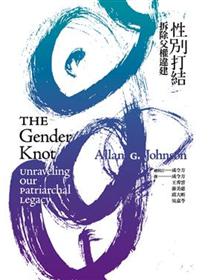章節試閱
《印象中國十九世紀》書摘
1 道光皇帝大閱兵
清文宗道光皇帝每年元旦都要在北京的皇宮檢閱八旗禁衛軍。兵部要將領勇猛如虎,將領為士兵披上虎皮,並且在盾牌畫上猛獸的圖案。
閱兵式上只見八旗軍官頭戴閃亮頭盔,頂部插著一根大約八英寸的羽冠,裝飾著金頂和花翎,他們身穿藍色或紫色絲袍,腳蹬黑緞做的靴子,刀劍的手柄、弓的彎角和火繩槍的槍托鑲著閃亮亮的寶石。各式旗幡迎風招展,士兵抬著轎子,打著燈籠,舉著龍旗,皇家樂隊現場演奏,鑼鼓喧天,還有形狀像是龍、蛇、魚的吹奏樂器,伴著不計其數的豎笛和琵琶。
The Parade of Emperor Daoguang
Emperor Daoguang during Qing Dynasty reviewed the “Eight Banners” Guards every New Year’s Day in the Royal Palace in Beijing. Generals of the Ministry of War in feudal China were as brave as lions and they covered soldiers with tiger skins, painting beast patterns on their shields.
The parade witnessed the officers wearing shiny helmets, with about 8 inches of feathers on the top, decorated with golden tops and HuaLings (a kind of peacock feather). They are wearing blue or purple silk robes and black satin boots. Shiny bright jewels are inlaid in the handle of the sword, the corner piece of bows and the gunstock of matchlocks. All kinds of flags are fluttering in the wind. Soldiers are carrying sedan-chairs and holding lanterns as well as dragon flags. The live royal band performs with gongs and drums. There are some wind instruments in the shape of dragons, snakes and fish, accompanied by countless clarinets and pipas.
2 圓明園正大光明殿
十九世紀的中國,大清帝國威儀天下,北京城裡巍峨的宮室、櫛比的府第錯落有致,經常接待外國藩使的圓明園尤為富麗堂皇。占地十一平方英里的公園裡,假山池沼、流觴曲水與超過三十組的獨立宮殿渾然一體。
建築在四英尺高花崗岩台階上的正大光明殿,四周環以紅漆圓木支撐著檐頂,內排柱子的間隔部分砌著四英尺高的磚牆,磚牆上方鑲著格子框架,框架裡糊著高麗紙,可根據氣溫變化自由開關。宮殿地面的工藝簡單樸素,鋪著漂亮的灰色地磚,呈棋盤式排列。大殿正中,髹金龍椅雄踞,門前放置兩面大鼓,皇帝駕到時,隨即咚咚響起。
The Open and Above Aboard Hall in the Old Summer Palace
The 19th century of China is during the period of Great Qing Empire with an impressive and dignified manner all over the world. In Beijing, lofty palaces and row upon row of scattered houses were well organized. The Old Summer Palace became even more magnificent and gorgeous owing to reception of foreign emissaries. In the 11-square-mile park, the rockery mountain, the pond and the winding stream integrated with over 30 independent palaces perfectly.
The Open and Above Aboard Hall, built on four feet tall granite steps, is surrounded by logs painted in red to sustain the canopy top. The intervals of the inner row of pillars are filled with four feet tall brick walls, on which are decorated with lattice frames made by Hanji (a kind of Korean paper), switching freely according to the temperature change. The craft of the palace ground is simple and austere, arranged like the checkerboard with beautiful grey floor spreading on it. The golden dragon chair is standing stately in the middle of the hall. In front of the door are placed two big drums, which would be played when the emperor arrived.
3 虎丘山帝王行宮
蘇州城西北約九華里之處的山丘間,坐落著虎丘山帝王行宮。這幅畫中央的岩石壁上寫著「虎丘」二字,就是此處的地名。
虎丘之名由來,相傳是因為春秋時代吳王闔閭葬於此處,下葬後第三天有人看見一隻白虎盤據在墓碑上好幾天,而且每年定期造訪,據傳,當秦始皇想毀掉吳王墓時,這隻白虎就會出現。因為這個歷史典故,加上此處風景優美,吸引了秦朝官員王珣和王珉在峽谷裡建造了別墅。行宮的後面有岩石跨越深谷與對面的崖壁相連,崖頂上是美麗的虎丘寶塔,寶塔原本是河神廟的一部分,塔上視野開闊。
The Imperial Palace of Tiger Hill
The imperial palace of Tiger Hill is located among hills 9 miles away from the northwest of Suzhou. There are two words “虎Hu” and “丘Qiu” written on the rock in the centre of the painting, which is the name of this place. The origin of this name has a legend: During the Spring and Autumn period, the emperor of Wu was buried here. After 3 days, a white tiger was seen crouching on the tombstone for several days and came here regularly every year. There was a saying that when the first emperor of Qin (Qin Shihuang) would like to destroy the graveyard, this white tiger would appear. Owing to this historical allusion and the exquisite scenery here, the officers of Qin Dynasty Wang Xun and Wang Min built the villa in the valley. Behind the Imperial Palace are rocks crossing over the deep valley and connecting with the cliff opposite. The beautiful Tiger Hill Pagoda is on the top of the cliff, having a broad field of vision, which used to be part of the River Temple.
4 官老爺出巡
披著帷幕,綴著流蘇的轎子,一張交織著銀線的絲網覆蓋在轎頂,頂部裝飾圓球。兩根竹竿穿過轎子兩側的鎖扣,用繩索連在一起,另一根短的竹竿從繩索下面穿過,短竹竿的兩端扛在轎夫的肩膀上,四個轎夫分攤了轎子的重量,當他們顯露疲態,還有另外四個轎夫跟在一旁,隨時準備換班。
一群僕人走在轎子前,有的敲鑼,有的吆喝,提醒閒雜人等讓路,還有一人拿著棍子威嚇周圍看熱鬧的民眾。到達目的地,向前遞上紅色長簡,若是受訪者正在辦喪事,則用寫上藍色字體的白色竹簡。這就是官老爺出巡,若是皇帝出巡,則是八人大轎,再配上穿黃制服的騎兵護衛。
The Officer Patrol
Dressed in curtains and tassels, the sedan has a silk net intertwined with silver wires covering and the decorative ball on its top. Two bamboo rods come through locks on both sides of the sedan, connecting with each other by the rope. Below the rope comes across another shorter rod, both ends of which are shouldered by bearers. Four bearers share the weight and when they get tired, another four bearers will follow and be ready to shift.
A group of servants walk in front of the sedan: some beat gongs and others shout to remind people to let the way. What’s more, there is a person with a short stick to alert the populace surrounding, who are watching the bustling. When reaching the destination, someone will step forward to send the red slip. If respondents are during the funeral period, then the slip will be the white slip with blue words on it. This is the officer patrol. When it comes to the emperor patrol, the sedan will become the larger one with eight bearers, matched with cavalry guards in yellow uniforms.
5 官家宅院
中國官員的宅院環繞著湖水盪漾,鑲花格木柱支撐著華美建築,右邊迎賓樓的雙層屋頂令人驚豔。從陽台上放眼望去,中間一座大氣寬敞的拱橋橫跨,拱橋上方還能看到高高的寶塔矗立,屋頂以倒扣的蓮花鐘為形狀。十九世紀的中國人喜歡以佛教相關的物品如蓮花、瓷瓶、燈籠、神像來裝飾,還將桑葉形狀裝飾在門廊和窗扉上。若說佛教是心靈所依,桑葉則是吐絲蠶兒的必要食物,而絲綢為中國貢獻國庫所需。
這張插畫其實取材自皇親安利波家族的府邸,從陽台和花架使用「特拉法加式」來裝飾,一部分還模仿扭曲的樹枝,可以想見主人興建府邸時的用心。
The Official House
The house of Chinese officials is around the rippling lake, with wooden lattice pillars supporting the gorgeous building. The double-layer roof of the guesthouse on the right side is amazing. Looking out from the balcony, you can see a big arch bridge stretching across the lake in the middle, behind which stands a tall pagoda. The roof resembles an upside-down lotus bell.
Chinese in the 19th century enjoy decorating with some Buddhist-related items such as lotuses, porcelains, lanterns and statues of Buddha. They also decorate porches and windows with mulberry leaves. Buddhism is what the soul depends on, just like mulberry leaves are what silkworms depend on and silk is what the contribution to Chinese treasury depends on. This ikon is actually based on the house of royal family Anlibo. Judging from the decoration of balconies and flower racks using “Trafalgar” style and the part imitation of twisted branches, we can imagine the devotion of the host to the construction.
6 官員府邸
盤髮以金簪或銀簪固定,額頭上裝飾著頭帶,太太坐在鑲著絲綢刺繡的竹製椅子上,老爺抽著菸威武站立一旁,奶娘也帶著孩子聚攏過來,一位商人展示著貨物努力推銷。從官員府邸的建築與宅內的裝修風格,更能真實了解中國人的生活方式。儘管建築的外部裝飾及華麗程度比不上古希臘羅馬,住所的格局卻意外地非常相似。大廳、庭院、門廊到臥室的通道雖然狹窄又曲折,外面的院牆也很容易翻越,但習俗和習慣,以及司法效率,卻讓這座官員宅邸比想像中還要安全許多。
The Official Residence
With the hair fixed by the golden or silver hairpin and the forehead decorated with the headband, the wife is sitting on the bamboo chair embroidered with silk, the husband is smoking and standing beside, the wet nurse is bringing children to gather together and a businessman is showing around and promoting his products.
We can get to know the actual lifestyle of Chinese according to the internal and external decoration style of the residence. Although the exterior decoration and its luxury degree are no match for those in ancient Greece and Rome, their arrangements of the residence are very similar by accident. The hall, the courtyard and the road from porch to bedroom are narrow and filled with twists and turns, but the external wall is easy to climb. Fortunately, this residence is safer than expected owing to customs and habits as well as judicial efficiency.
《印象中國十九世紀》書摘
1 道光皇帝大閱兵
清文宗道光皇帝每年元旦都要在北京的皇宮檢閱八旗禁衛軍。兵部要將領勇猛如虎,將領為士兵披上虎皮,並且在盾牌畫上猛獸的圖案。
閱兵式上只見八旗軍官頭戴閃亮頭盔,頂部插著一根大約八英寸的羽冠,裝飾著金頂和花翎,他們身穿藍色或紫色絲袍,腳蹬黑緞做的靴子,刀劍的手柄、弓的彎角和火繩槍的槍托鑲著閃亮亮的寶石。各式旗幡迎風招展,士兵抬著轎子,打著燈籠,舉著龍旗,皇家樂隊現場演奏,鑼鼓喧天,還有形狀像是龍、蛇、魚的吹奏樂器,伴著不計其數的豎笛和琵琶。
The Parade...
推薦序
導讀 重現十九世紀的歷史面貌
李鴻章曾以千年來未有之大變局來形容十九世紀中國所面臨的問題,但二十世紀及二十一世紀的中國變化更為巨大,政治體制從帝制走向共和,又從共和走向共產與民主多元並存的體制;傳統家族制度逐漸崩解,男女雖未完全臻於平等,但女子受教育及工作者愈來愈多;農業雖為根本,但工商蓬勃發展,傳統的市集逐漸被大的百貨公司及賣場所取代,交通縮短地域的距離,改變貿易型態,同時使人口逐漸往城市集中;文化方面,傳統的儒家思想自清末及五四運動以來遭到極大的挑戰,西方思潮如狂潮巨浪席捲整個中國。在一連串的變化中,有些給中國帶來正向的發展,有些則帶來極大的破壞或改變,許多珍貴的文物流失、許多偉大的建築被戰火所破壞,重構歷史的面貌,成為我們這一代的使命與責任。
如何重構十九世紀中國的面貌,除了檔案、史料、回憶錄、出土文物之外,最重要的是圖像,包括照片、繪畫、版刻等,這些圖像具有賞析的作用,更有助於歷史建築的重建。然而,這些材料既稀有亦不容易取得,裘國英先生戮力蒐集古籍,此次蒐集十九世紀的刻印畫英國畫家Thomas Allom(阿龍)的畫作,內容多元而精緻,有助於了解十九世紀中國的各種風貌。
裘國英先生是輔大化學系畢業,是成功企業家的典範,熱愛歷史、熱心公益、提攜後進,並且有執行力,平時喜歡蒐集古籍、周遊各國,具有世界觀,此次蒐集十九世紀中國的刻印畫,不僅保存,且將之出版流通,對於保存史料與推廣貢獻卓著。
本書主要以Thomas Allom的作品為主,他是十九世紀大英皇家建築師,在倫敦設計了許多建築物,包括聖彼得教堂和諾丁山優雅的Ladbroke莊園。一八四三年在英國出版《圖說中國帝國》(The Chinese empire illustrated,有些翻譯成《百年前的中國》),這本書問世,立即成為英國,乃至歐洲著名以繪畫本呈現的中國歷史教科書,是西方主流社會了解中國的主要讀物。當時歐洲人關於中國的知識,有些從這部書中獲得,中國較有名的圓明園、長城、景山、午門、運河、虎丘塔、雷峰塔、報恩寺、琉璃塔、金山寺、龍舟、燈籠、宴請、婚禮,乃至祭拜、擲骰子等都經由這本書流布於歐洲。
Thomas Allom的版畫比用相機拍攝更美,刻劃的內容相當豐富,到處都是古老中華帝國的風光、建築及社會習俗。有上層統治者的生活紀錄,如道光皇帝大閱兵、官員府邸、官老爺出巡等;有庶民生活,如通州賣茶和賣貓商人、迎親隊伍、天津大劇院、端午龍舟賽、賣菜船工與鸕鶿捕魚、養蠶人家等;有中國重要建築,如大報恩寺琉璃寶塔、鼓浪嶼、萬里長城、北海公園、南京古城等,不僅可了解當時中國官宦富豪居住之精美,並可一窺庶民生活況味,帶領我們進入十九世紀中國各地的情境,猶如一部十九世紀中國的精美旅遊手冊。畫中有許多建築基於戰火或其他因素現已不復存在,如南京大報恩寺琉璃寶塔、廈門城門牌樓、南京古城、乍浦古橋等,雖經修建,然與十九世紀時期的實景仍有一段落差,這些版畫有助於重現當時歷史的面貌。
林桶法
輔仁大學歷史系教授兼系主任
導讀 重現十九世紀的歷史面貌
李鴻章曾以千年來未有之大變局來形容十九世紀中國所面臨的問題,但二十世紀及二十一世紀的中國變化更為巨大,政治體制從帝制走向共和,又從共和走向共產與民主多元並存的體制;傳統家族制度逐漸崩解,男女雖未完全臻於平等,但女子受教育及工作者愈來愈多;農業雖為根本,但工商蓬勃發展,傳統的市集逐漸被大的百貨公司及賣場所取代,交通縮短地域的距離,改變貿易型態,同時使人口逐漸往城市集中;文化方面,傳統的儒家思想自清末及五四運動以來遭到極大的挑戰,西方思潮如狂潮巨浪席捲整個中國。在一連串...
作者序
古董刻印畫裡的歷史實境
2016年中美南海海域衝突事件發生時,我在網路上想找一張地圖,希望能證明中國對該海域的長久主權,哪怕是找到一張洋人印製的中國地圖都行。結果找到早自十六、十七世紀,西洋人到中國來探索寫的遊記,有德文、荷蘭文、法文版本,雖然看不懂,但書中的插畫極為有趣,揭露出當時的山川景物,以及民間生活,更有趣的是,當時西洋畫家不會畫中國人,畫出來的都是西洋身材、西洋臉,但穿著是中國服飾。
那時照相術尚未問世,有錢的大佬到各地遊歷,帶著畫家,看到有趣的景物,就畫下來,算是對當時的中國,做了珍貴的寫實紀錄。我們看到博物館中收藏的中國古畫,寫意較多,用足夠透視感畫寫實的較少,尤其是從西洋人眼中看東方、看中國,似乎從畫裡仍透露出他的驚豔與好奇。
繼續搜索中,在網路上結交了在歐洲從事古董書畫買賣的人士,出於他們熱心也是生意,代我向他們同業蒐集類似的書籍和零散插畫,我將其命名為「古董刻印畫」。
這些畫製作程序是,先由畫家將畫完成,交給雕刻師,雕在木頭、石頭或鋼板上,再由印刷工匠,一張一張印出來,畫上往往也留下畫家和雕刻家的姓名。這種刻印畫早期都用木板製版,紋理較粗,但到十九世紀,大概煉鋼技術較為成熟,刀較利、版較硬,表現出極精緻的刻功,明暗立體乍現,連畫中人物臉部明暗,身上衣著的刺繡,建築物梁上的花鳥都表現得出來。
十九世紀的刻印畫出現最多的畫家要屬英國的Thomas Allom,我給他取個綽號叫「阿龍」。其實阿龍是個建築師,許多倫敦的名邸都出自他手,他也是英倫建築師學會的創辦人。
阿龍的畫,遍及歐洲、中東、亞洲各地,估計他跑了不少地方,後來因在藝術及建築上的成就,被封為爵士。阿龍畫了不少建築景觀,由於他對透視度的重視及擅長,阿龍畫中的建築,比用照片拍的建築物更美、更誇張。從畫中,了解當時中國官宦富豪居住之精美,也將我們帶進當時空間,一窺庶民生活,真正進入十九世紀中國各地的情境,有幾張珍貴的鴉片戰爭實境,有如身臨戰況,令人震撼。
十九世紀末,照相術成熟了,用照相取代手繪,雕刻藝術家、印刷工匠失去他們的功能和飯碗,但是他們所留下的印象是珍貴的,因為歷經歲月、戰爭的侵蝕,許多建築、景物已不復存在,具象的歷史只能進入畫裡的空間,用思想去遊歷了。
2017年夏
古董刻印畫裡的歷史實境
2016年中美南海海域衝突事件發生時,我在網路上想找一張地圖,希望能證明中國對該海域的長久主權,哪怕是找到一張洋人印製的中國地圖都行。結果找到早自十六、十七世紀,西洋人到中國來探索寫的遊記,有德文、荷蘭文、法文版本,雖然看不懂,但書中的插畫極為有趣,揭露出當時的山川景物,以及民間生活,更有趣的是,當時西洋畫家不會畫中國人,畫出來的都是西洋身材、西洋臉,但穿著是中國服飾。
那時照相術尚未問世,有錢的大佬到各地遊歷,帶著畫家,看到有趣的景物,就畫下來,算是對當時的中國,做了珍貴的...
目錄
導讀 重現十九世紀的歷史面貌
自序 古董刻印畫裡的歷史實境
推薦序
1 道光皇帝大閱兵
2 圓明園正大光明殿
3 虎丘山帝王行宮
4 官老爺出巡
5 官家宅院
6 官員府邸
7 官府宴客
8 官宦女眷的生活娛樂
9 官家庭院裡的雜耍表演
10 大家閨秀的閨房
11 長城的盡
12 萬里長城
13 北海公園
14 西直門
15 普陀山普濟寺
16 大報恩寺琉璃寶塔
17 鎮江河口
18 鎮江銀島
19 七星岩
20 湖州的絲綢莊園
21 定海郊外
22 乍浦古橋
23 秦淮古橋
24 西湖
25 南京古城
26 江南寒泉山
27 浙江富春山
28 太湖碧螺峰
29 瓜島水車
30 石門
31 焦山行宮
32 揚州渡口
33 遠眺寧波城
34 五馬頭山
35 廣州街道實景
36 珠江黃塔
37 西樵山
38 海幢寺的碼頭和入口
39 海幢寺
40 肇慶府的峽山
41 韶州廣岩寺
42 從香山要塞遠眺澳門
43 太平昭關
44 媽閣廟
45 鼓浪嶼
46 廈門城門牌樓
47 賈梅士洞
48 澳門媽閣廟前
49 香港的竹渠
50 小布達拉宮
51 迎親隊伍
52 收受聘禮
53 中國商人的園林
54 麗泉行潘長耀別墅
55 天津大劇院
56 野台戲
57 二月初二迎春賽會
58 元宵燈節
59 端午龍舟賽
60 七月普渡
61 中秋祭拜
62 重陽放風箏
63 插秧
64 蘇州府播種水稻
65 東昌府的米販子
66 寧波的棉花種植
67 茶藝茶文化
68 茶船裝貨
69 煮繭繅絲
70 養蠶人家
71 染絲坊
72 賣菜船工與鸕鶿捕魚
73 英德煤礦
74 北京燈籠舖
75 臨清州踢毽子
76 布袋戲和皮影戲
77 通州賣茶和賣貓商人
78 天成路上叫賣膏藥
79 船工鬥鵪鶉賭博
80 鞭笞犯人
81 船過運河水閘
82 金壇縴夫
83 求籤問卦
84 從古墓遠眺廈門
85 廈門古墓
86 中國的墓地
87 墓地旁的擲骰子遊戲
88 赤城兵營
89 大黃口炮台
90 鎮江西門激戰
91 晉江入口
92 奪取穿鼻
93 乍浦佛寺之戰
94 鎮海孔廟大門
全球印象
讀後
導讀 重現十九世紀的歷史面貌
自序 古董刻印畫裡的歷史實境
推薦序
1 道光皇帝大閱兵
2 圓明園正大光明殿
3 虎丘山帝王行宮
4 官老爺出巡
5 官家宅院
6 官員府邸
7 官府宴客
8 官宦女眷的生活娛樂
9 官家庭院裡的雜耍表演
10 大家閨秀的閨房
11 長城的盡
12 萬里長城
13 北海公園
14 西直門
15 普陀山普濟寺
16 大報恩寺琉璃寶塔
17 鎮江河口
18 鎮江銀島
19 七星岩
20 湖州的絲綢莊園
21 定海郊外
22 乍浦古橋
23 秦淮古橋
24 西湖
25 南京古城
26 ...



 2收藏
2收藏

 2二手徵求有驚喜
2二手徵求有驚喜



































